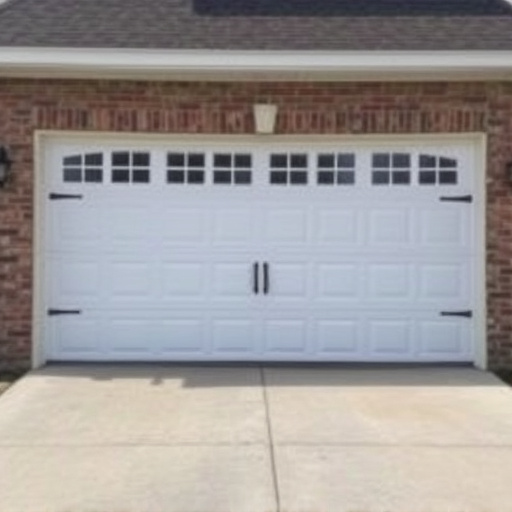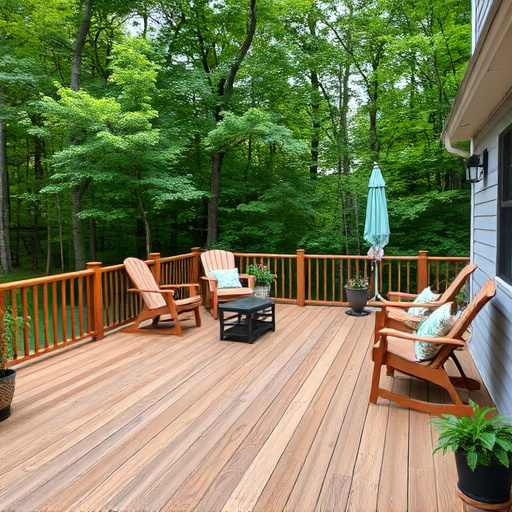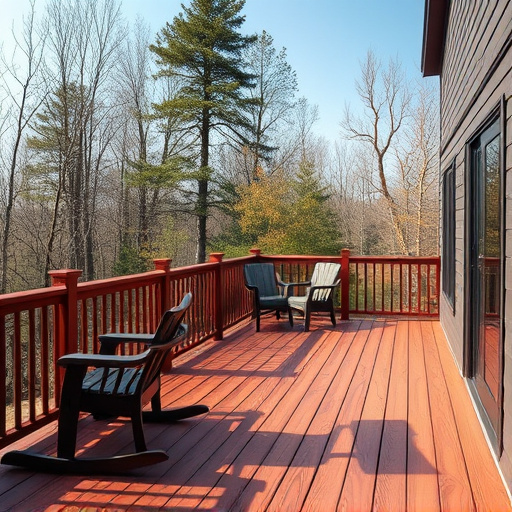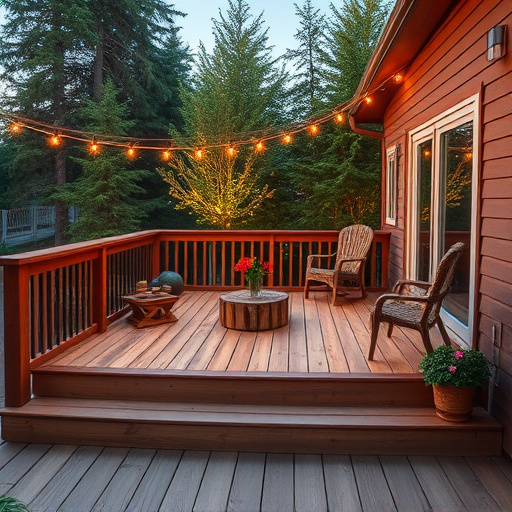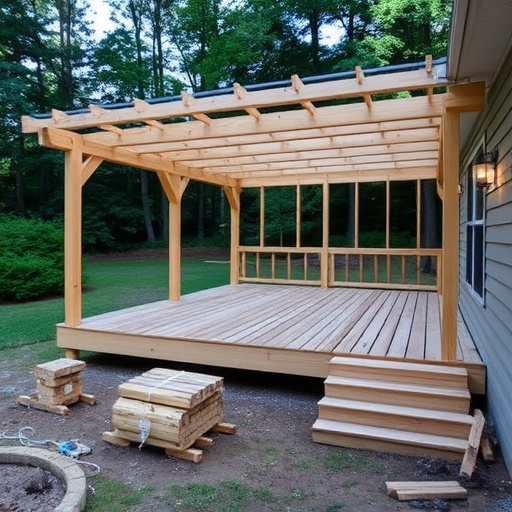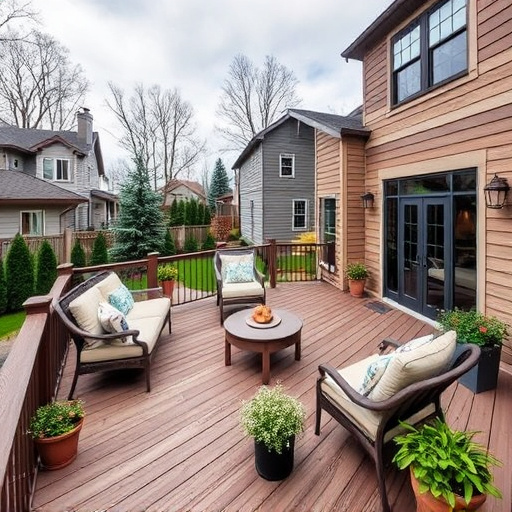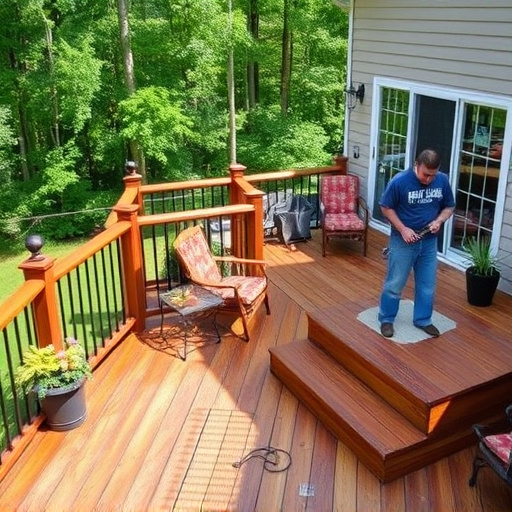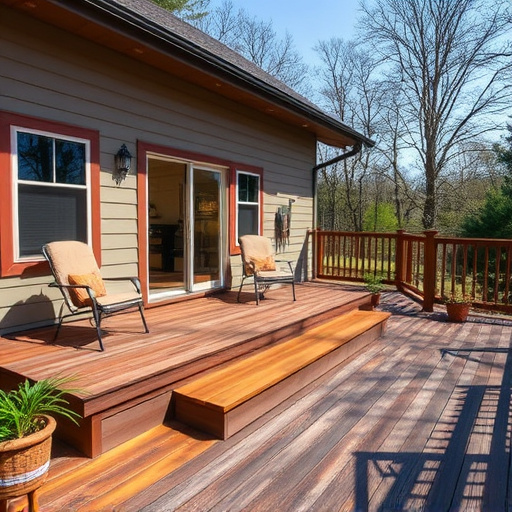Adhering to local building codes for deck railing safety is vital, with minimum height requirements between 36-48 inches, proper fastening, and spacing to prevent falls and legal issues. Choosing suitable materials like wood, metal, composite, or glass, as recommended by roofing and siding experts, ensures compliance and enhances outdoor space aesthetics.
“Deck railing is not just an aesthetic addition; it’s a critical safety feature. This comprehensive guide unravels the essence of deck railing height regulations, offering insights into code requirements across diverse regions. We explore how to ensure compliance while selecting from various material options, ensuring both safety and style. By understanding these standards, homeowners and builders can create secure outdoor living spaces that meet or exceed regulatory expectations.”
- Understanding Deck Railing Safety Standards
- Measuring and Compliance for Different Areas
- Material Options and Their Regulations
Understanding Deck Railing Safety Standards
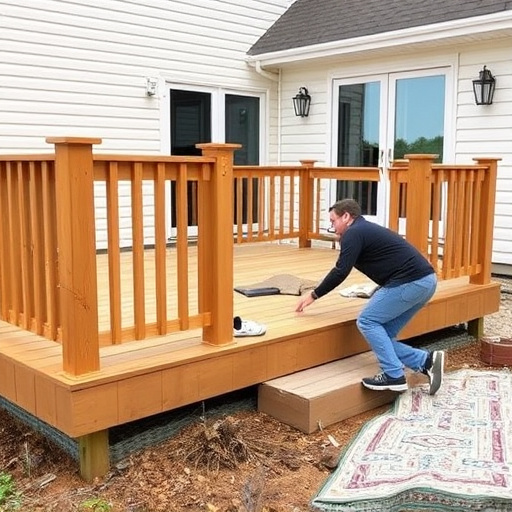
Maintaining safety standards for deck railings is paramount to prevent accidents and ensure a secure outdoor experience. The primary focus is on height and guardrail requirements set by building codes, which vary across regions. Typically, deck railing heights are regulated to ensure a barrier that prevents individuals from falling, especially in residential areas. Professional siding experts often recommend adhering to these standards not just for safety but also to avoid potential legal issues related to storm damage repairs.
Building codes typically dictate minimal height requirements, often ranging from 36 inches (91 cm) to 42 inches (107 cm), measured from the deck surface to the top of the railing. Additionally, guardrails should be securely fastened and spaced appropriately to prevent any gaps that could pose a risk. Homeowners and contractors alike must understand these regulations, especially when replacing or installing new railings, to ensure compliance and maintain a safe outdoor environment, complementing their roofing services and overall property aesthetics.
Measuring and Compliance for Different Areas
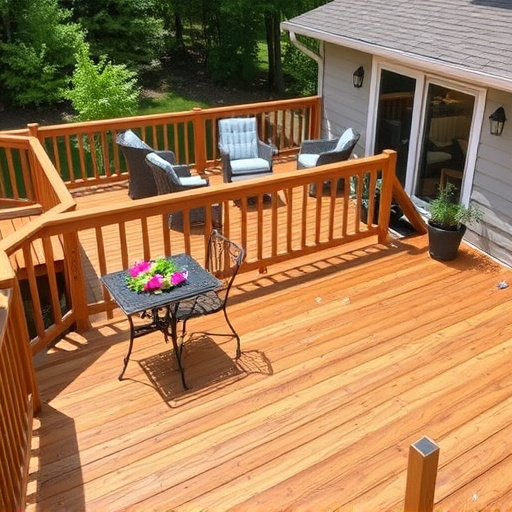
When it comes to ensuring safety and compliance for deck railings, understanding local building codes is paramount. These regulations dictate the minimum height requirements for railings, which vary depending on the region. Homeowners and contractors must measure and install railings that meet or exceed these standards. For instance, many areas mandate a minimum height of 36 inches (91 cm) above the deck surface to prevent falls, with certain regions even specifying higher barriers for added security.
Compliance is crucial, especially in residential roofing and siding services. Deck railing height codes are designed to protect homeowners and their families, especially children and pets. Adhering to these guidelines ensures that your deck is safe and enjoyable for all users. Remember, measuring and installing railings according to local regulations not only prevents potential accidents but also maintains the aesthetic appeal of your outdoor living space, complementing the overall residential siding features.
Material Options and Their Regulations
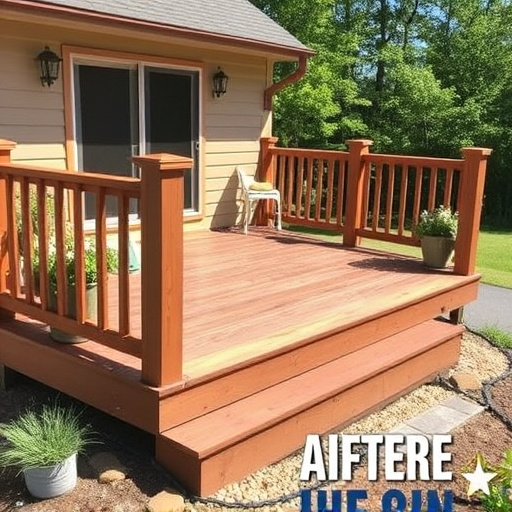
When it comes to deck railing height and code requirements, understanding material options is crucial. Various materials like wood, metal, composite, and glass are popular choices for deck railings, each with its own set of regulations. Wood, for example, requires regular maintenance to prevent rot and insect damage, while metal and composite materials offer low-maintenance solutions. Glass railings, though elegant, necessitate specific safety standards to avoid injuries from broken panels, which can be addressed through proper installation and impact-resistant glass use.
In terms of regulations, local building codes dictate the minimum height requirements for deck railings, often ranging from 36 to 48 inches above the deck surface. Additionally, roofers and siding experts, providing roofing services or storm damage repair, should be involved in installing railings that meet both aesthetic and safety standards. These professionals ensure that the chosen materials align with local building codes, offering not just a secure but also visually appealing deck railing system for your outdoor space, protecting it from potential hazards much like how roofing and siding protect your home from weather-related damage.
When it comes to deck railing, adhering to height and code requirements is paramount for safety and compliance. By understanding the relevant standards, measuring accurately, and exploring suitable material options, you can ensure a secure and visually appealing deck railing system that meets all necessary regulations. Remember, a well-designed and properly installed deck railing not only enhances the functionality of your outdoor space but also contributes to the overall safety of those who use it.




